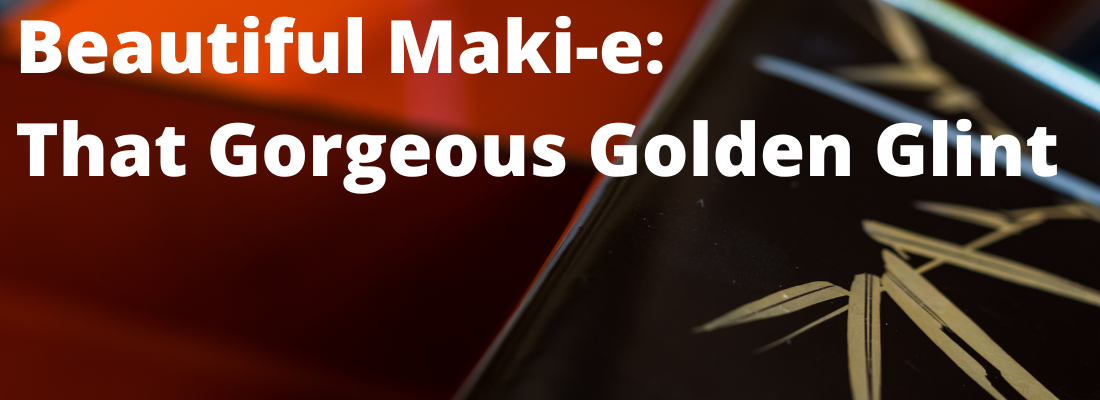You may have ever looked at a pen and thought, “Is that gold glitter? How did that get there?” The answer? Maki-e.
According to Encyclopedia Britannica, maki-e is: “lacquer ware on which the design is made by sprinkling or spraying wet lacquer with metallic powder, usually gold or silver.”
Such dry terms describe an art form that’s been in existence for over 1400 years. Highly trained artists in Japan have been making maki-e art for centuries, creating beautiful rice bowls, tea sets, and many other items. From tables to tea spoons, maki-e continues to adorn traditional Japanese handiworks.

Bernard Lyn, in his book, Maki-e, an Art for the Soul, goes so far as to call Japan, “a nation of Maki-e.” Over the years, the artists have developed many techniques for employing gold and silver powders to create stunning works of art. Speaking broadly, maki-e is an umbrella term for many different techniques using metallic powders, as each generation of artists refined and innovated their processes.

While maki-e handcrafts have been in existence for many years, fountain pens are a rather new innovation. The first maki-e fountain pen was sold less than 100 years ago, in 1925.
Translated literally from the Japanese, maki-e means “sprinkled picture”. This makes sense, because one maki-e technique is to gently sprinkle gold powder onto the pen to create the artwork. It’s a very exacting and unforgiving technique, and a mistake at any stage can be difficult or impossible to fix. As a highly specialized craft, it requires years of apprenticeship and practice before one can become competent.
Many pens sold at UrushiPen feature maki-e, with each created by a master artisan. For instance, the Butterfly pen features intricate artwork depicting butterflies and their decorative wings:
You can see another example in the Phoenix pen, which features maki-e techniques to outline the phoenix and add details and life to the creature:

Another stunning example of maki-e on pens is Goyu Station, with gold powder used throughout nearly the entire pen:

Now that you know how to appreciate maki-e, enjoy browsing through our collection of maki-e pens.
References
Lyn, Bernard. Maki-e, an Art for the Soul. Win Yuan Enterprise Co., Ltd., 2003.
A Brief History of Maki-e, Danitrio.
Maki-e, Encyclopedia Britannica.


